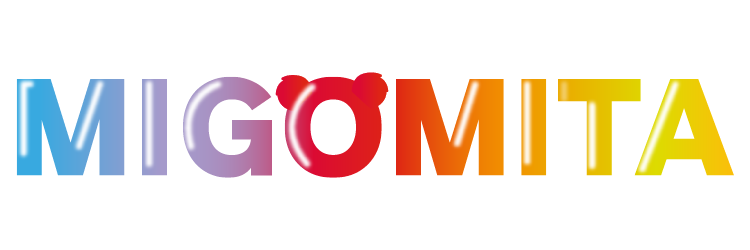1. Introduction: The Evolution of Tools and Their Role in Shaping the Modern World
Tools are fundamental to human progress, enabling us to manipulate our environment, build civilizations, and improve our quality of life. From simple stones to sophisticated digital machinery, tools reflect our ingenuity and adaptability. Their importance in human development cannot be overstated; they are the backbone of technological advancement that has transformed societies over millennia.
Overview of the Progression from Simple to Complex Tools
- Primitive tools: Stones, sticks, and shells used for basic tasks.
- Metallurgical tools: Bronze and iron implements introduced more durability and precision.
- Industrial revolution tools: Machinery and assembly lines revolutionized manufacturing.
- Digital tools: Computers, automation, and smart technologies define modern construction.
The purpose of this article is to explore how this evolution of tools has directly influenced modern construction and urban planning, shaping the cities we live in today.
2. The Origins of Construction Tools: Foundations of Human Innovation
Ancient civilizations pioneered the earliest construction tools, driven by necessity and resourcefulness. The Egyptians, for example, developed specialized blocks of limestone and sandstone, using copper tools and rudimentary pulleys. These materials and tools laid essential groundwork for architectural achievements like the pyramids.
Early Tools and Their Impact
Primitive tools such as chisels, hammers, and levers enabled ancient architects to shape massive stones, demonstrating an early understanding of engineering principles. These innovations in tool design directly influenced the development of architectural techniques like corbeling and post-and-lintel systems, which are still foundational today.
The evolution from simple stone tools to specialized bronze and iron implements marked a significant leap, allowing for larger, more complex structures and more precise construction techniques.
3. The Evolution of Construction Safety and Standards
As construction projects grew in scale and complexity, safety standards became essential. One practical measure is the implementation of safety zones—such as maintaining a minimum 10-meter buffer around active construction sites—designed to protect workers and bystanders.
Historical Progression of Safety Measures
- Early safety practices: Basic precautions, often informal, with limited regulations.
- 20th-century developments: Introduction of safety helmets, barriers, and signage.
- Modern safety tools: Wearable sensors, drones for site inspection, and automated safety systems integrate the latest technology to minimize hazards.
4. From Ancient to Modern: Material Science and Building Techniques
Material innovations have significantly enhanced safety, durability, and efficiency in construction. Ancient builders used durable stones, but today, advanced materials like high-strength concrete, insulation panels, and composite materials dominate urban environments.
Material Innovations and Urban Impact
- Durable blocks: Modern concrete mixes improve longevity and safety.
- Insulation and reflective surfaces: Materials like reflective paint and insulated panels reduce heat gain, contributing to energy efficiency.
- Color choices and heat reflection: For example, pink buildings can reflect more heat, reducing cooling costs in urban heat islands.
A notable example is the use of reflective coatings and color choices in contemporary architecture, which not only enhance aesthetic appeal but also improve environmental performance. Some modern buildings exemplify these innovations, combining safety, efficiency, and design.
5. Modern Tools and Technologies in Urban Development
The advent of machinery, digital modeling, and automation has revolutionized construction processes. Heavy-duty excavators, cranes, and robotic systems accelerate building timelines and enhance safety by reducing human exposure to hazards.
Impact on Development and Safety
- Digital modeling: Building Information Modeling (BIM) allows precise planning and clash detection before construction begins.
- Automation: Robots and automated systems perform dangerous tasks, reducing accidents.
- Urban planning examples: Projects like mysweettown.top illustrate how integrating these tools results in safer, faster, and more efficient development.
6. The Interplay Between Tool Development and Environmental Considerations
Modern tools are designed not just for safety and efficiency but also to promote sustainability. Innovations like energy-efficient machinery, green building materials, and smart technology contribute to reducing environmental impact.
Environmental Impact of Building Designs
- Color choices: Lighter colors and reflective surfaces reduce heat absorption, lowering cooling energy consumption.
- Sustainable tools: Solar-powered equipment and recycled materials optimize resource use.
- Future trends: Smart tools that monitor energy use and environmental conditions enable adaptive, sustainable construction practices.
7. Non-Obvious Aspects of Tool Evolution: Cultural and Societal Influences
Cultural values and societal priorities significantly influence building technologies. For instance, safety standards reflect societal concern for worker well-being, while aesthetic preferences shape urban aesthetics. These societal influences motivate innovations in tools and materials, leading to safer, more efficient, and visually appealing environments.
Role of Education and Innovation
Educational programs and research drive ongoing development, fostering a culture of innovation that continually refines construction tools and techniques.
8. Case Study: My Sweet Town – An Illustration of Modern Tool Application
Modern urban developments like My Sweet Town exemplify how advanced tools and safety standards are integrated into city planning. Its design features include automated safety barriers, energy-efficient materials, and digital modeling that ensures structural integrity and environmental sustainability.
Design and Construction Features
- Use of BIM for precise planning
- Deployment of robotic construction equipment
- Incorporation of reflective surfaces and green materials
- Implementation of safety buffers and automated safety systems
Lessons from the development of My Sweet Town highlight the importance of continuous technological integration, safety adherence, and environmental consciousness in urban planning for future cities.
9. Conclusion: The Continuous Journey of Tool Innovation and Building Our Future
Throughout history, each milestone—from primitive stone tools to digital modeling—has contributed to safer, more efficient, and more sustainable construction practices. Ongoing innovation remains vital, ensuring that future urban environments are not only functional but also resilient and environmentally friendly.
«Understanding the evolution of construction tools helps us appreciate the complexity and potential of our modern environment, guiding us toward smarter, safer, and greener cities.»
By studying the history and current trends in tool development, we can better prepare for future challenges in urban development, ensuring that our cities continue to grow in harmony with technological progress and environmental stewardship.
